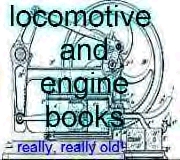Gas, Gasoline,
And Oil Engines 1910
by Gardner
D Hiscox
reprinted
by Lindsay Publications
"A complete
and practical work treating on gas, gasoline, kerosene, and crude petroleum
oil-engines including producer-gas plants for gas-engine owners, gas engineers,
and intending purchasers of gas-engines, fully describing and illustrating
the theory, design, construction and management of the explosive motor for
stationary, marine and vehicle motor power." (After writing the title alone,
the author must have been exhausted!)
Today, we
don't think much about engines, but in 1910, internal combustion engines
were starting to rapidly replace steam engines. The cast iron monsters described
were high tech and prospective users needed education. This 18th edition
revealed the secrets.
There's not
a lot I can say about this book other than it's a classic. It's loaded with
photo's, drawings, and engravings of engines, and all the components that
go into their construction from ignition systems to valve mechanisms, from
clutches to lubrication pumps. You even get off-the-wall info on propellers
for marine engines and use of steam engine indicators on IC
engines.
You also get
a great illustrated chapter on converting coal into producer gas. These are
big stationary plants to turn coal into gases that can be burned by an
engine.
This is great
info for the guy who wants to perfect a small bumper mounted unit for his
car so that he can burn wood instead of gasoline. These units may also be
adaptable to the production of coke. Don't know. You figure it
out.
The last chapter
is a great research tool. You get the dates, numbers and inventor names of
several thousand engine patents granted between 1875 and 1910. You get NO
details however. This can be useful if you're researching the output of a
particular inventor, say, Diesel for instance. But beyond that, many of the
patents are of little interest. I know having referred to the list to produce
the patent books listed elsewhere in this catalog that the list is not complete
– close, but not quite complete.And later patents are generally for
early automobiles rather than stationary engines. But it's a great list,
nonetheless. Great book. A must have for the engine nut. Classic text. Loaded
with rare information of all types. Get a copy. 5 1/2 x 8 1/2 softcover 476
pages
No.
22032



![[divider bar1]](Div.gif)